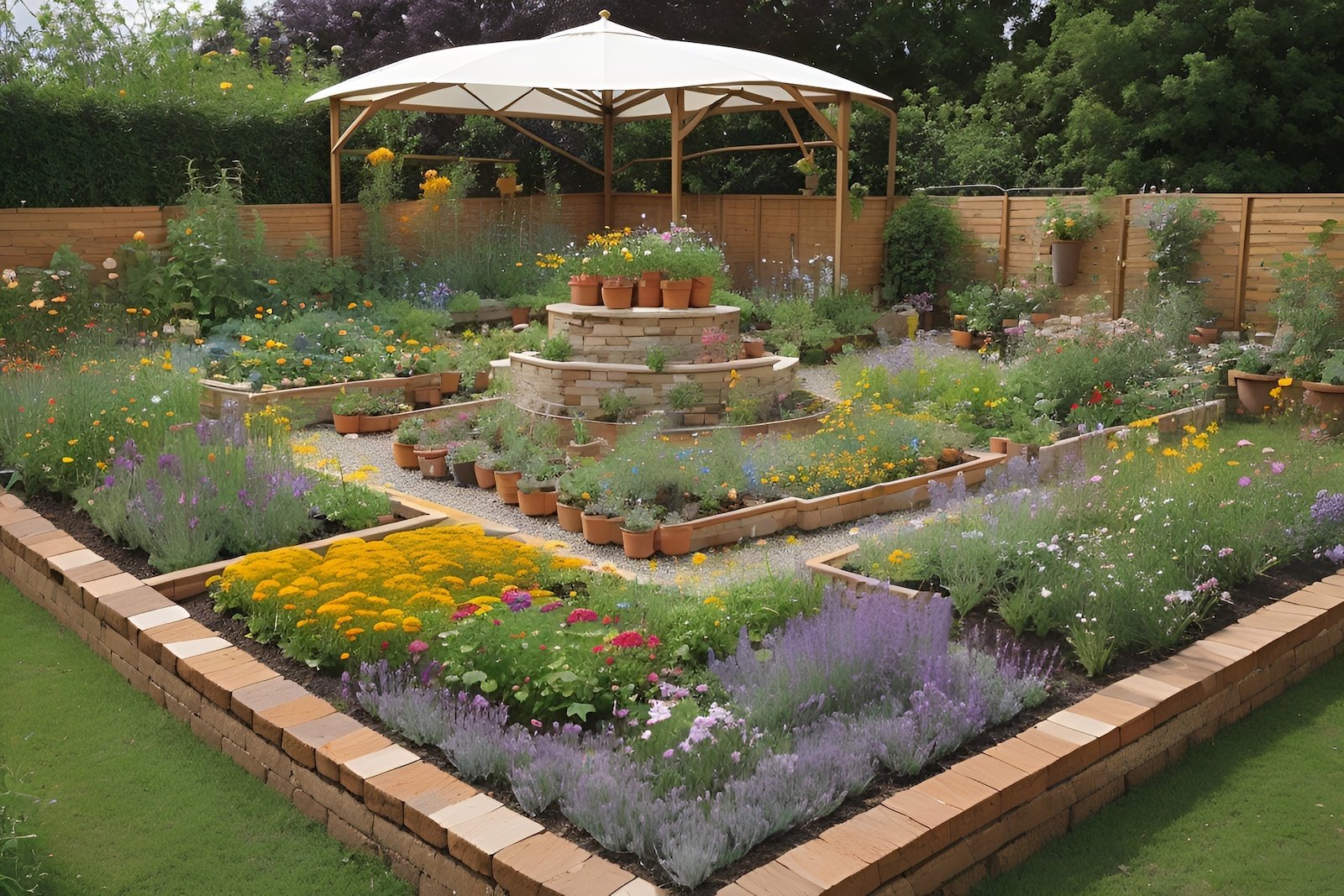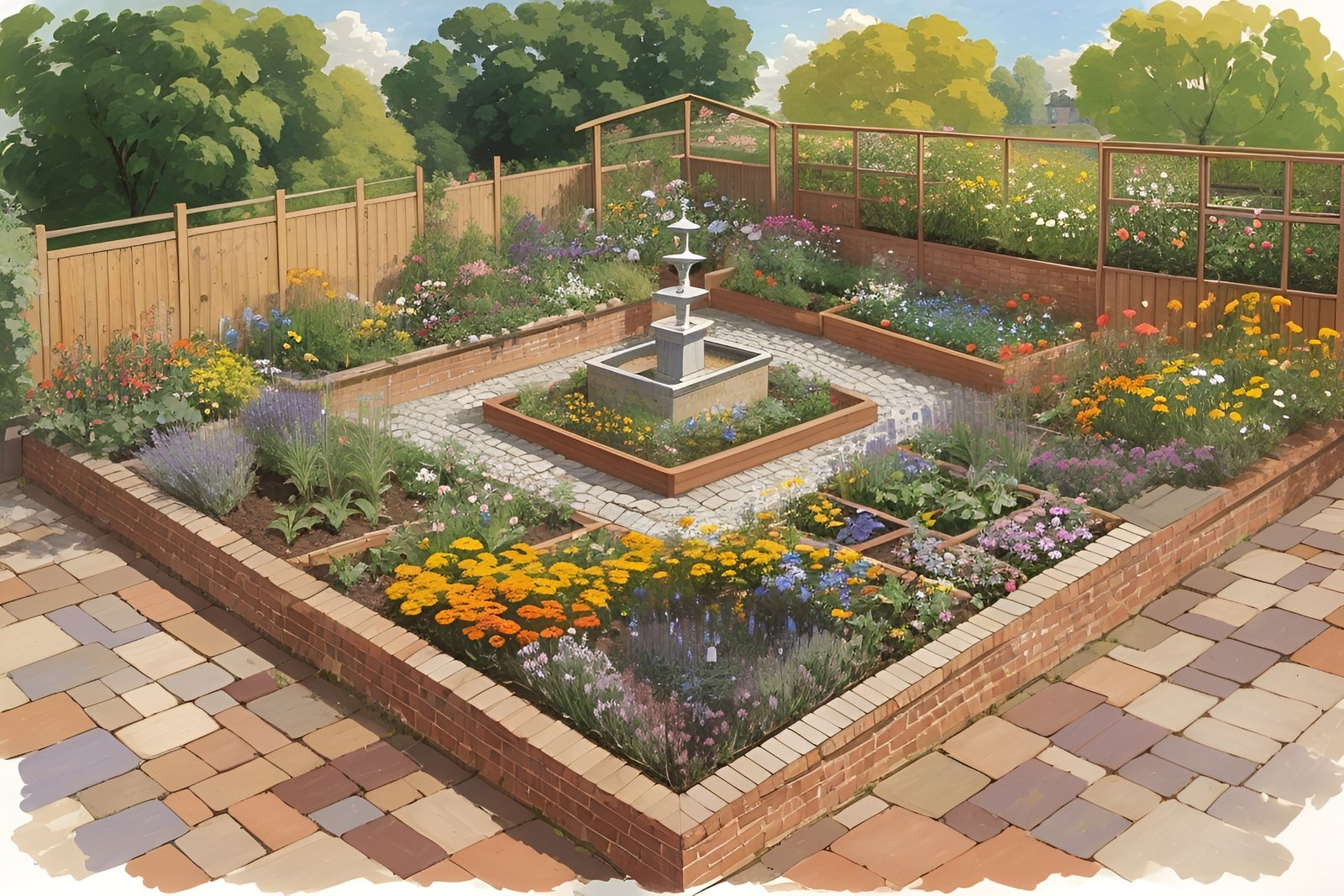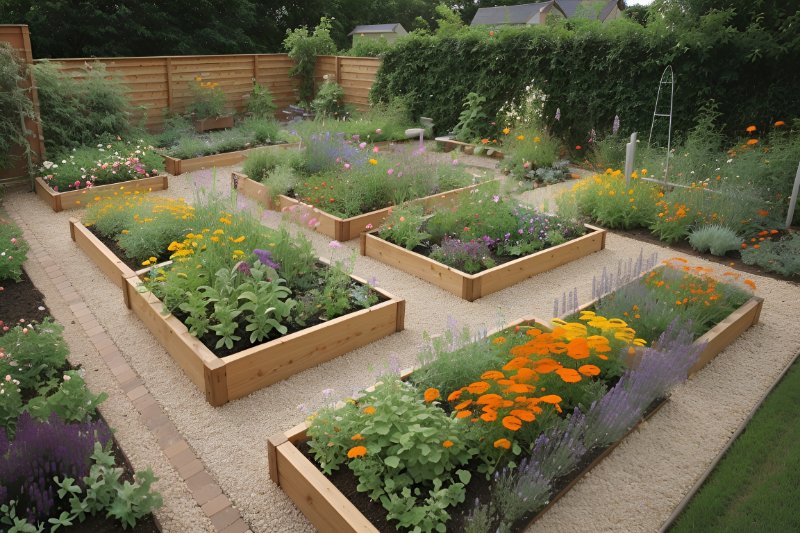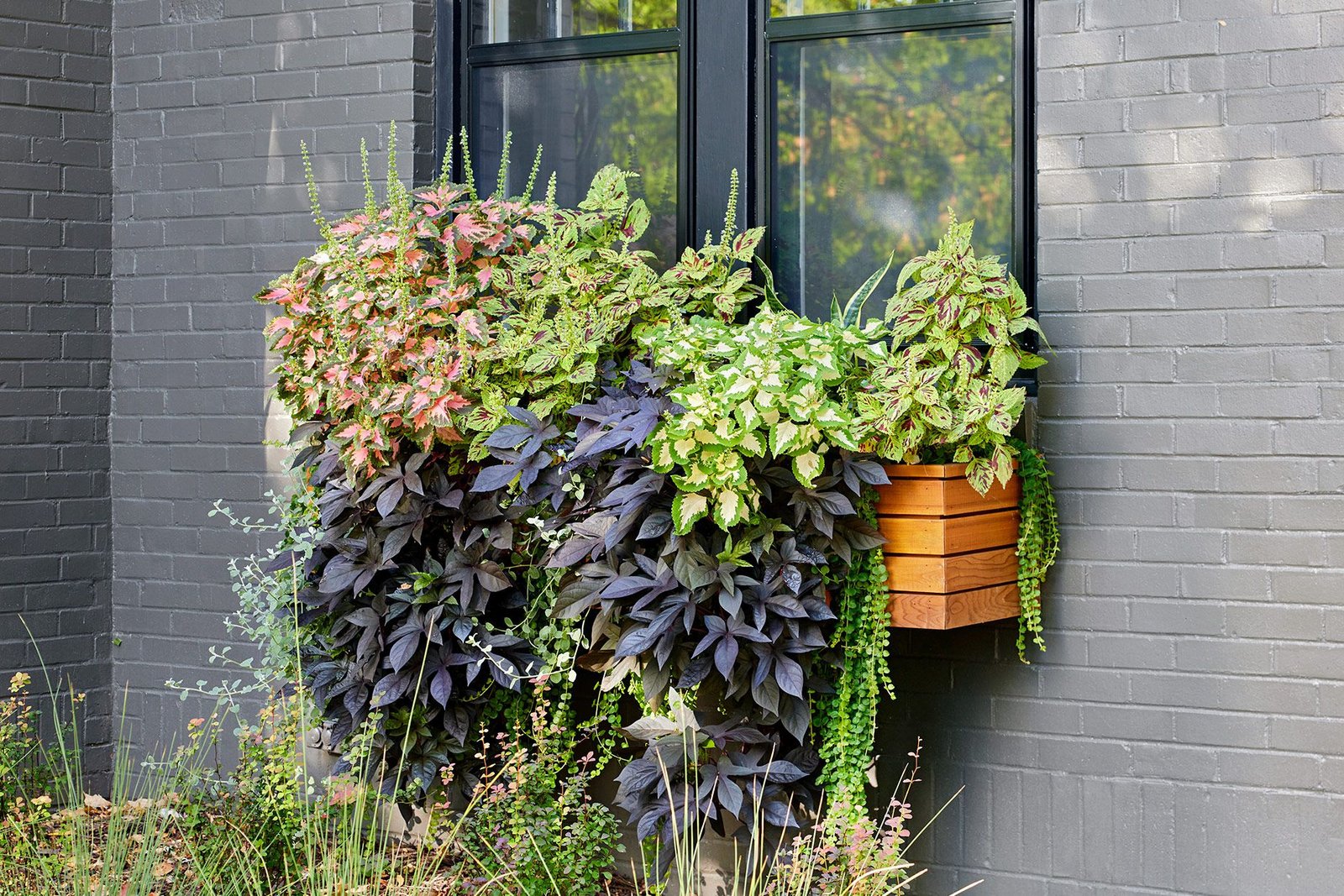How to Design a Potager Herb Garden
A potager herb garden combines the beauty of an ornamental garden with the utility of an edible garden. This traditional European style features aesthetically pleasing geometric designs with herbs and sometimes vegetables and edible flowers artfully planted together. Creating a potager herb garden allows you to grow culinary, medicinal, and fragrant herbs conveniently in one dedicated space. Read on to learn how to successfully design and cultivate your own beautiful and bountiful potager herb garden.
Key Points:
- A potager herb garden efficiently combines beauty and utility in one dedicated space.
- Careful planning allows you to grow culinary, medicinal, and ornamental herbs together.
- Orderly geometric designs make harvesting and care easy.
- Choosing the right herbs for your climate ensures success.
- With proper care, a potager herb garden will thrive for years of bountiful harvests.
What is a Potager Herb Garden?
A potager garden is a visually appealing, orderly kitchen garden that efficiently uses space to grow ornamental edible plants together. The orderly geometric designs keep potager gardens neat and organized. Herbs feature prominently due to their versatile benefits.
Herbs add immeasurable flavor and aroma to cooking. Certain herbs also offer soothing medicinal value. Plus, they attract pollinators while repelling some pest insects. With careful planning, a potager herb garden produces herbs for culinary and wellness use all in an aesthetically pleasing layout.
Benefits of Having a Potager Herb Garden
Some key advantages of dedicating space to a potager herb garden include:
- Convenience – Having frequently used herbs right outside your door makes cooking with freshly harvested herbs easy. You don’t have to travel to a nursery or market to buy herbs.
- Flavor and nutrition – Just-picked herbs contain higher concentrations of essential oils and nutrients compared to store-bought herbs. Using freshly harvested herbs makes meals taste their absolute best.
- Decorative appeal – Geometric designs, attractive edging, and blooming herbs give potager gardens a highly ornamental look in addition to being productive.
- Efficient use of space – The orderly, compact layouts of potager gardens allow you to grow more edibles in less space compared to traditional vegetable rows.
- Pollinator haven – Flowering herbs like lavender, borage, thyme, and chamomile attract and support bees, butterflies, and other beneficial pollinating insects.
How to Choose a Location for Your Potager Herb Garden
When selecting where to install your potager herb garden, consider these factors:
- Sunlight – Most culinary herbs need at least 6 hours of direct sun daily. Choose a south-facing spot that gets plenty of sunlight.
- Soil – Well-draining, nutrient-rich soil helps herbs thrive. Amend clay or sandy soils with compost. Check pH – most herbs prefer slightly alkaline soil.
- Water – Ensure there’s a water source nearby, like a spigot or hose. Drip irrigation can be incorporated to save water.
- Convenience – Locate your potager close to your kitchen for easy harvesting while cooking. Consider views from inside as well.
- Access – Place your potager herb garden where you can easily reach it but out of the way of foot traffic patterns.
Remember that a potager herb garden is both beautiful and practical. Select an optimal spot that satisfies both demands. With a good location chosen, you’re ready to begin designing your personalized potager herb garden.
Designing Your Potager Herb Garden
A thoughtfully designed potager herb garden combines form and function. Follow basic design principles to create a layout that is visually organized, efficiently planted, and easy to maintain.
Choosing a Layout
Potager gardens utilize geometric shapes and patterns to create an orderly, ornamental look. Consider these time-tested layout options:
- Rows – Straight rows in a grid or zig-zag pattern. Offers efficient use of space.
- Raised beds – Square or rectangular beds framed by wood, stone, or bricks. Good for poor or compacted soil.
- Bordered beds – Beds contained by clipped hedges, wooden boards, or stone edges. Allows for lush, full plantings.
- Mounded beds – Freestanding mounded garden beds surrounded by paths on all sides. Provides good drainage.
- Keyhole beds – Circular or teardrop-shaped beds with paths cutting through the center. Makes inner beds accessible.
Choose a structured layout well-suited to your available space and desired formality. Remember to size paths appropriately to allow for easy tending and harvesting.
Creating Paths
Winding paths leading to and encircling planting beds add beauty while serving vital functions:
- Provide access to plants for care and harvesting without compacting soil.
- Offer visual interest and encourage exploration of the garden.
- Help delineate orderly beds and straight lines when paths are linear.
- Act asLines provide edging and demarcation when paths wrap around beds.
Constructing paths early makes garden areas accessible for installing plants and maintaining beds. Materials like gravel, pavers, stone, brick, wood chips, or decomposed granite all work well to define and cover paths.
Adding a Focal Point
Every potager herb garden benefits from one or more garden focal points – special visual features that immediately catch the eye:
- Water features – Fountains, ponds, or bird baths
- Ornamentation – Birdbaths, sundials, statues, stepping stones, or artwork
- Structures – Arbors, trellises, pergolas, obelisks, or raised seating
- Specimen plants – Unusually colored or shaped herbs, dramatic foliage
- Vertical elements – Tall decorative grasses, climbing vines, trees
Situate focal points where they will be visible along main paths, near seating areas, or as a destination within your potager. The focal point helps define the design and lends added visual charm.
With the layout mapped out and key features added, it’s time to select which delicious and beautiful herbs to include in your potager herb garden.
Choosing Herbs for Your Potager Herb Garden
One of the joys of creating a potager herb garden is selecting which herbs to grow. Consider including a mix of culinary, medicinal, and ornamental herbs that will thrive in your climate and growing conditions.
Culinary Herbs
These popular cooking herbs are must-haves for any chef:
- Basil – The king of herbs for pesto, tomato dishes, etc. Choose sweet, cinnamon, or purple basil varieties.
- Oregano – Robust, peppery flavor perfect for Italian and Mediterranean dishes.
- Thyme – Earthy, mildly minty thyme complements meats, beans, vegetables.
- Rosemary – Piney, savory rosemary excels with roasted meats and mushrooms.
- Parsley – Fresh, grassy parsley brightens up many savory dishes as a flavorful garnish.
- Sage – Must-have for Thanksgiving stuffing and hearty fall/winter dishes.
- Mint – Spearmint and peppermint add refreshing accent notes to sweets and fruit dishes.
- Chives – Delicate onion flavor, lovely blooms. Snip onto baked potatoes, salads, and more.
Medicinal Herbs
These time-honored herbs have therapeutic properties:
- Chamomile – Calming medicinal tea relieves anxiety and aids sleep. Pretty daisy-like flowers.
- Lemon balm – Makes an uplifting, refreshing herbal tea. Emerald leaves with lemon scent.
- Echinacea – Widely used to support immune health and fight colds/flu. Purple coneflower blooms.
- Valerian – Root and flowers yield a potent sleep-promoting and anxiety-reducing extract.
- Feverfew – Used to alleviate headaches, arthritis, and menstrual pain. Daisy flowers.
Fragrant Herbs
Add enticing aroma to your potager with these fragrant herbs:
- Lavender – Extremely fragrant purple flowers. Use in sachets and flower arrangements.
- Lemon verbena – Intensely lemon-scented leaves flavor drinks, jellies, and more.
- Pineapple sage – Brilliant red flowers and pineapple-scented leaves delicious in tea. Attracts hummingbirds.
- Anise hyssop – Licorice-scented leaves and flowers for teas. Excellent bee plant.
- Patchouli – Large, musky leaves used to make essential oil. Adds exotic fragrance.
Annual Herbs
These culinary favorites thrive when replanted yearly:
- Basil – Fast-growing basil loves sun and heat. Pinch flowering stems to prolong harvest.
- Cilantro – Sow cilantro repeatedly for fresh flavor in salsas, curries, and more. Bolts quickly in heat.
- Dill – Essential for pickles. Flowers attract beneficial insects before plant goes to seed.
- Chervil – Delicate, anise-flavored herb for eggs, chicken, dressings, and sauces.
Perennial Herbs
These hardy herbs deliver year after year:
- Mint – Extremely vigorous mint spreads aggressively. Grow it in containers to control.
- Oregano – Prolific oregano thrives for years with good drainage and sun.
- Thyme – Drought-tolerant thyme persists with minimal care and brings bees.
- Chives – Clumping chives multiply each year. Pretty purple flowers.
- Sage – Shrubby garden sage can grow for decades with proper winter rest period.
Sun-Loving Herbs
These Mediterranean herbs need at least 6 hours of direct sunlight daily:
- Rosemary
- Oregano
- Thyme
- Sage
- Lavender
- Lemon balm
- Basil
Shade-Loving Herbs
These herbs toleratepartial shade with 3-4 hours of sun:
- Mint
- Chamomile
- Chervil
- Parsley
- Chives
- Cilantro
- Dill
Drought-Tolerant Herbs
These hardy herbs withstand dry conditions:
- Lavender
- Rosemary
- Thyme
- Oregano
- Sage
- Chives
- Winter savory
When designing your potager herb garden, be sure to select herbs suited to your specific growing conditions and climate. Filling your potager with beautiful, thriving herbs starts with choosing varieties you can successfully grow.
Planting Your Potager Herb Garden
Once your potager herb garden is thoughtfully laid out and you’ve selected which herbs to grow, it’s time to get planting! Follow these tips to get your herbs off to the best start.
Preparing the Soil
Herbs thrive in fertile, well-drained soil. To prepare your potager soil:
- Loosen soil to a depth of 12-18 inches using a spade fork and mix in 2-4 inches of compost.
- Test drainage by digging a 12 inch deep hole and filling with water. If it doesn’t drain fully within 1 hour, amend soil with compost to improve drainage.
- Test pH with a soil test kit. Most herbs prefer slightly alkaline soil with a pH between 6.5-7.0. Adjust as needed.
- Consider adding organic vegetable garden fertilizer according to package rates before planting.
Planting Your Herbs
Follow best practices when installing herb plants:
- Refer to seed packets or plant tags for recommended spacing for each variety. Do not overcrowd!
- Carefully remove plants from containers, loosen roots, and plant at same depth they were originally growing.
- Set out plants in spring once the danger of frost has passed.
- Water transplants immediately after planting and whenever soil dries out the first few weeks.
- Mulch around plants with 2-3 inches of organic matter like shredded leaves or straw to retain moisture.
Watering and Fertilizing Your Herbs
Proper irrigation and nutrition keeps potager herbs thriving:
- Water herbs consistently, aiming for around 1 inch of water per week either through rainfall or supplemental watering.
- Allow soil to partially dry out between waterings rather than keeping it constantly wet.
- In hot summer months, mulch and shade cloth can reduce water needs.
- Feed herbs monthly with a fish emulsion or seaweed fertilizer according to label instructions to replenish nutrients.
With your herbs settled into their thoughtfully planned spots, maintaining optimal growing conditions will keep your potager herb garden happily productive.
Caring for Your Potager Herb Garden
A well-designed potager herb garden requires minimal work to maintain once planted, but regular care is still essential. Follow these tips to keep your potager herbs healthy and bountiful.
Weeding
- Keep planting beds weed-free by hand pulling weeds, cultivating with a hand fork, or carefully hoeing around herbs.
- Add mulch after weeding to discourage weed seeds from sprouting.
- For heavier weed pressure, lay down landscape fabric with holes cut out for the herbs around each transplant. Cover fabric with mulch.
Mulching
- Replenish mulch as it decomposes to retain soil moisture and temperature.
- Organic mulches like wood chips, shredded leaves, straw, and pine needles work well in potager herb gardens.
- Keep mulch 2-3 inches away from herb stems and crowns to prevent rot.
Pest and Disease Control
- Insect pests like aphids and mites can be controlled with horticultural soaps, neem oil, or diatomaceous earth.
- Deer, rabbits, and rodents may need to be excluded with fencing or mesh barriers. Dogs can also scare away deer.
- Monitor for fungal issues which thrive in overly damp conditions. Improve airflow and avoid frequent wetting of foliage.
With routine tending to weeds, mulch, and pests, your potager herb garden will continue producing abundantly.
Harvesting Herbs from Your Potager Herb Garden
A thriving potager herb garden will reward you with ample herbs for enjoying fresh or preserving dried. Follow these guidelines when gathering your herb bounty:
When to Harvest Herbs
- Harvest herbs in the early morning after dew has evaporated for best flavor.
- Cut stems just above leaf nodes so they re-sprout from that point.
- Gather leaves or new growth as needed once plants are established. Take no more than one-third of growth at a time.
- For seeds, allow seed heads to fully ripen and dry on plants before collecting.
How to Harvest Herbs
- Use clean, sharp shears, scissors, or pruning snips to cut herbs. Make cuts on an angle.
- Select only healthy, vibrant leaves and stems free of blemishes, wilting, or flower buds.
- Handle herbs gently to avoid bruising. Avoid crushing or compressing leaves.
Storing Herbs
- Store freshly cut herbs short-term in the refrigerator by trimming stem ends and placing upright in a glass with an inch of water. Cover the leaves loosely with a plastic bag.
- Freeze chopped herbs by mixing into olive oil and freezing in ice cube trays for easy use in cooking.
- Air dry loose herb stems or bundles wrapped in paper bags. Store dried herbs in airtight glass jars out of light.
Enjoy the benefits of always having garden-fresh culinary, medicinal, and fragrant herbs right within arm’s reach by designing and cultivating your own beautiful potager herb garden. With mindful planning and care, your potager will continue producing herbs that elevate your cooking, wellness, and landscape for years of bountiful harvests.
Conclusion
Designing a potager garden doesn’t have to fussy at all. Your potager herb garden design can be simple or complicated as you wish it to be. The key consideration on how to design a good potager herb garden is simply to make it look beautiful.
Creating a thoughtfully planned potager herb garden allows you to grow culinary, medicinal, and ornamental herbs all in one visually striking space. Follow the design principles outlined here to develop a layout suited to your needs and available area.
Be sure to select herbs that suit your growing conditions and climate. Think beyond just culinary herbs – incorporate blooming and aromatic varieties to make your potager herb garden a thriving ecosystem that engages all the senses.
The orderly, geometric designs of potager herb gardens provide beauty but also make tending and harvesting efficient. Proper soil preparation, attentive plant care, and consistent watering will keep your herbs healthy and productive. With a well-designed potager herb garden, you’ll enjoy year after year of bountiful fresh herbs that elevate cooking and everyday living.
With the right information and techniques, both novice and experienced gardeners can create a thriving potager herb garden that delights the eye while delivering an abundance of herbs. Get started planning your unique potager herb garden today!
FAQ: Designing a Potager Herb Garden
What is a potager herb garden?
A potager herb garden is a visually pleasing, orderly kitchen garden that efficiently uses space to grow ornamental and edible plants, especially herbs, together.
What are the benefits of a potager herb garden?
Benefits include convenience, access to fresh herbs and edible flowers, decorative appeal, efficient use of space, habitat for pollinators, and the ability to intricately design the layout.
How do you choose herbs for a potager garden?
Select a mix of easy-to-grow culinary, medicinal, ornamental, annual, and perennial herbs suited to your climate and growing conditions.
What are some good focal point features?
Focal points like water features, statues, raised seating areas, arbors, specimen plants, and vertical elements lend visual interest.
What are the best materials for potager garden paths?
Gravel, pavers, bricks, stone, wood chips, and decomposed granite all make attractive, functional paths.
How often should you harvest herbs?
Harvest herbs frequently, taking no more than one-third of new growth at a time. This encourages steady regeneration.
How do you dry herbs for storage?
Air dry loose herb stems or bundles wrapped in paper bags in a warm, dark place. Then store the dried herbs in airtight jars out of sunlight.
What are good resources for designing a potager herb garden?
Browse our Herb Gardening Guide covering topics like layouts, raised beds, propagation, drying methods, and variety recommendations to get started.






